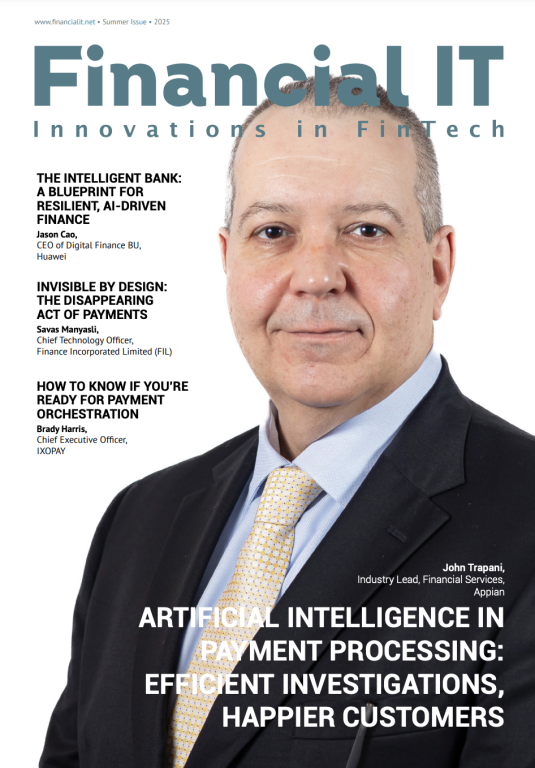The Top Fintech Trends of 2021

- Mark Jeninkson, Director of Strategy at Chetwood
- 20.12.2021 01:00 pm #Trends #payments #OpenBanking
A lot has happened in the Fintech world over the past year and the easing of lockdown restrictions in most countries has seen the appetite for further innovation from both customers and those working within the industry grow.
Digital payments
The pandemic accelerated the adoption of mobile payments and use of digital wallets, with customers increasingly seeing these as the go-to, rather than a niche alternative to cash and cards. According to a report from UK Finance, contactless payments increased by 12% during 2020 alone, which brought overall contactless payments to just over a quarter of all UK payments. This transition coupled with Strong Customer Authentication (SCA), has enabled digital payments to mature.
Beyond the theme of mobile payments, we will also undoubtedly see more headlines around Crypto and Decentralised Finance (De-Fi) in 2022, specifically focusing on their uses in global payments and remittance and vastly reducing the cost and improving speed and efficiency for cross border trading.
In De-Fi, whilst collaterised lending is becoming widespread, there are still challenges to prove the use case for un-collatersied lending and as such, pave the way for genuine unbundling of traditional financial institutions. That said, there are some interesting companies experimenting in the space, mixing on-chain and off-chain data to make credit decisions.
Although these methods may not move into mainstream consumer payment mechanisms in the immediate near term, regulators across the globe are looking seriously at the creation of digital national currencies.
Open Banking into Open Finance
Over the last few years, the broader implementation of PSD2 and Open Banking have also come to the fore. The technology is in place and the pandemic has encouraged more consumers and small businesses to adopt Open Banking. We saw this happen when credit became restricted, encouraging many to react by enabling customers to share their data to allow access to credit, or to facilitate a change to cheaper credit. This trend has proven that where there is a strong use case, customers will indeed share their data.
That said, there is still a long way to go. According to the Open Banking Implementation Entity (OBIE), 2.5 million UK consumers and businesses are using Open Banking, with one of the biggest challenges centered on issues around the re-consent of data. Consumers using Open Banking services that give third-party providers (TPPs) such as apps or peer-to-peer (P2P) lending platforms access to their main bank account would have to reauthenticate with their account servicing payment service providers every 90 days to reconfirm permission. However, the UK’s Financial Conduct Authority (FCA) recently scrapped the 90-day reauthorization requirement, a move seen as a boon for the Open Banking sector. According to the FCA, it was important to remove the requirement because the 90-day rule “creates friction when using TPP services and increases the likelihood of customers dropping off.”
This year, several fintechs specifically focused on Open Banking have launched, and we are excited to see how these propositions develop over the coming year as we hope to start moving from the technology to customer-centric propositions.
White label platforms or Banking-as-a-Service
White labelled platforms, also known as Banking-as-a-Service (BaaS), have emerged as a cost-effective and efficient way for delivering financial services. As many businesses have looked to develop new revenue streams on the back of the pandemic, there has been a rise in businesses from retail super brands to newly formed fintechs interested in the use of this technology.
However, embedded finance such as this is not enough on its own. There must be a compelling customer proposition, one that is aligned to the brand and establishes greater levels of trust and engagement with the core business. We’ve certainly seen this evolve during 2021 and expect this to continue next year, as more and more organisations start to look towards partnership models to support their business.
We expect to see more collaboration across a wide range of industries, with established players utilising fintechs’ expertise and products to provide not only innovative technology, but to help them boost their own offering for customers.
AI (Artificial Intelligence) and ML (Machine Learning)
A few things we can be sure of from the last year is that people want clear results and they want them fast.
Many financial services applications already use AI and ML today for everything from fraud detection, lending approvals, and AML screening to risk monitoring and investment predictions, processing large amounts of data sets in seconds.
This is something that will be constantly evolving and the fintech industry will continue to benefit from its power in 2022.
Cyber security
The evolution of digital banking, although hugely beneficial, brings its own risks.
The large data sets, often held by financial services companies, are an appealing target for fraudsters. As a result, cyber security continues to be one of the spaces that receives the most focus and investment within the industry.
Utilising the very best technology has to offer through cloud computing, cloud security, mobile security and advanced authentication, financial service companies are able to detect and prevent fraudulent behaviours whilst also providing a quick, easy and digital customer experience.
Alongside this, better security is being established with the use of biometric authentication; voice, face and fingerprint recognition is a solution that is improving cyber security offerings throughout the industry.
What’s more, further development of biometric identification down the line could allow companies to track customers’ emotions and satisfaction level in real time so that product performance can be tracked and value can continue to be added to services.
Summary
2021 has seen improvements across the industry, however, it’s important we don’t lose the momentum or pace of growth moving forward. Developing core trends and pushing for further innovation will create massive opportunities for banks and fintechs, help us maintain a competitive edge, and ensure we meet customers’ evolving expectations.





















